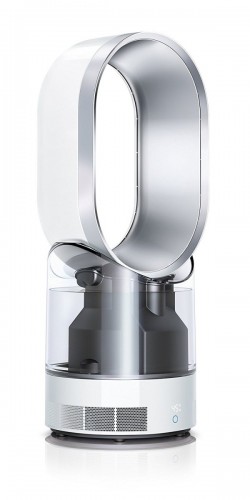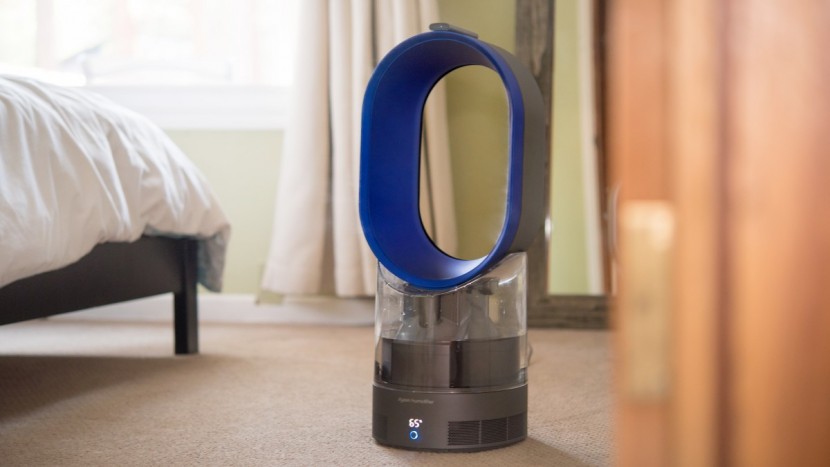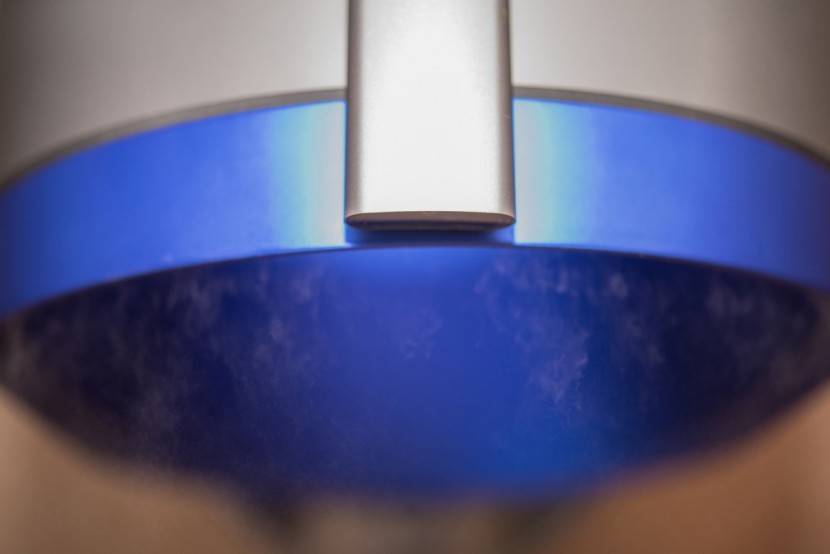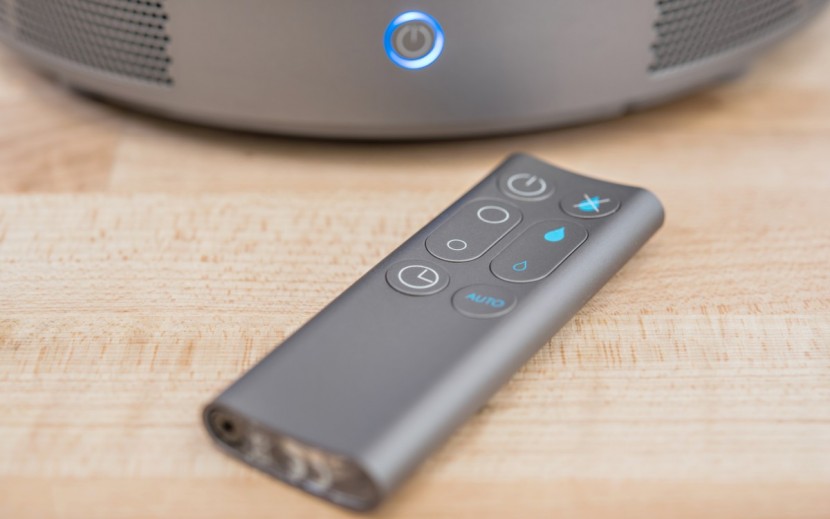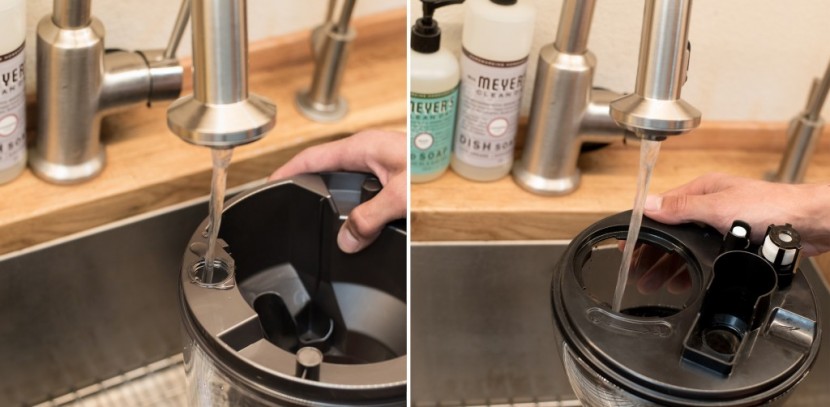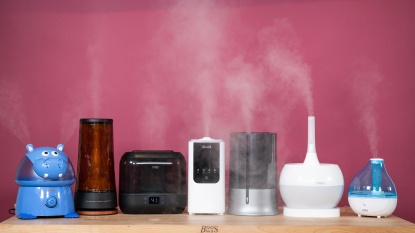Dyson AM10 Review
Our Verdict
Our Analysis and Test Results
The Dyson AM10 is a unique and powerful humidifier that also includes all of the benefits of one of Dyson's bladeless fans, but at a near astronomical price.
Performance Comparison
The Dyson AM10 was towards the bottom of our overall scoresheet (as you can see in the table above), largely due to a high estimated lifetime cost and a water tank that is somewhat difficult to clean and refill. In the sections below we further detail its performance in all of our individual tests.
Humidifying Performance
The Dyson AM10 was above average in our humidifying testing, scoring a 7 out of 10. It was able to push our testing room to 45% humidity in just 29 minutes, which was slightly faster than the top ranking Levoit LV600HH. It maxed out at 57.6%, which was a bit below the top models. It features a self-regulating humidistat that was the most accurate we tested. It always read within 1% of our humidity meter. The next closest competitor was the Levoit, which stayed within 2%. We doubt you'll be able to notice this slight difference in real world use, but the Dyson AM10 does technically have a slight edge in the self-regulation department.
One unique aspect or the Dyson AM10 is its attached fan. This disperses the mist farther than other models, and does seem to have a more immediate effect. Where most models let mist pour out and slowly raise the humidity, the Dyson AM10 can blow the mist around the room. Of course, if you're using a humidifier for cold, dry, winter air you probably don't want to have mist blown in your face. But if you live in a desert environment, it can be a refreshingly cool, moist breeze.
Ease of Cleaning
This is one area where the Dyson AM10 lost some points. It earned only a score of 4 out of 10 in this metric. This was mostly due to the incredibly tiny 1" opening in the water tank that makes getting in there to scrub nearly impossible. This isn't a big deal if you keep up with general cleaning, but if any mold starts to form it is incredibly difficult to scrub it out. The Dyson does use an ultraviolet light to sanitize the water, but that doesn't preclude mold formation if you leave it sitting for a while. In contrast, the Levoit LV600HH's water tank has a much larger 3.25" opening that makes scrubbing much easier.
The Dyson's manual calls for a citric acid soak to clean everything out. It took us 20 minutes to complete the cleaning process, not including the time we left it to soak. This was slightly longer than most models, which on average took 15 minutes to clean.
User Friendliness
The Dyson AM10 received an average score of 6 out of 10 in our user friendliness metric. First the good. It has a simple interface that makes changing the fan and humidifier settings easy. It also has a digital readout on the front that lets you know how hard the fan is blowing, what humidity level has been selected, and if the off timer is on or not. All of these settings are controlled with a convenient remote control that attaches magnetically to the top of the unit. Now the bad. The very small opening on the water tank makes refilling quite difficult, unless you have Sundance Kid level aim. Also you must disassemble the unit into 3 pieces to get to the tank. This isn't particularly difficult, but it is one extra step. In contrast the Levoitt LV600HH also has a simple interface and a tank that is much easier to refill.
Operating Cost
The Dyson AM10 was the least economical model we tested with an incredibly high estimated lifetime cost of $579. This figure is mostly due to the $500 price tag. It also uses more electricity than any other model we tested (0.03 kWh per hour), largely because of its fan. This cost is really only worth it if you want Dyson's bladeless fan, as the better performing Levoit LV600HH carries an estimated lifetime cost of just $153.
Value
The Dyson AM10's exorbitant price of $500 is really only worth it if you love Dyson's bladeless fan. Otherwise there are many models that are much less expensive and better values, namely the Levoit LV600HH.
Conclusion
The Dyson AM10 provides good humidifying performance, but an incredibly high price tag and a tank that is difficult to refill make it only worthwhile if you're a big fan of Dyson's bladeless fan.


